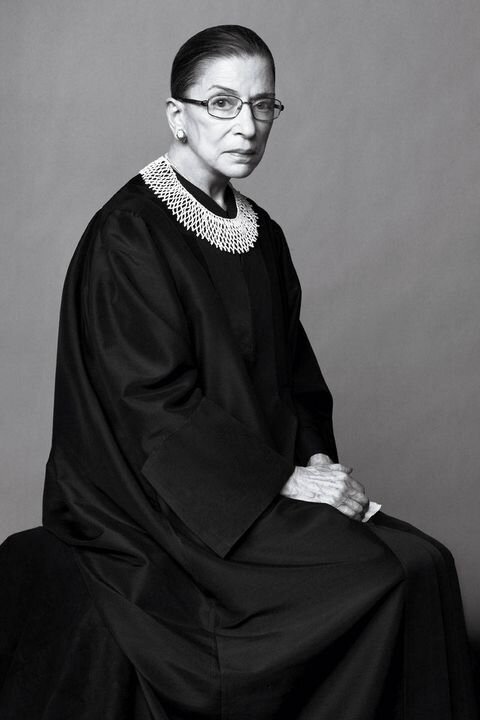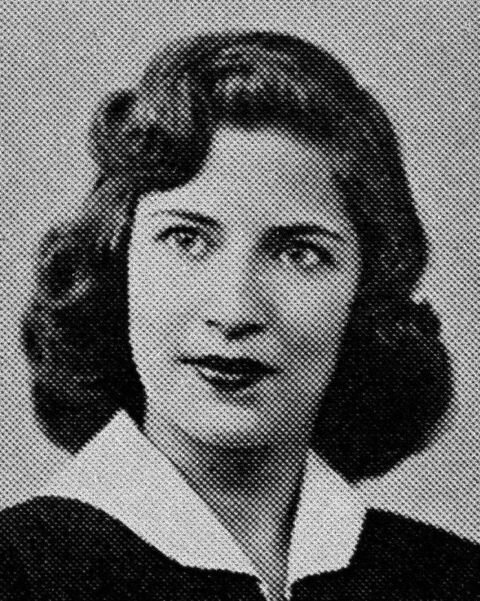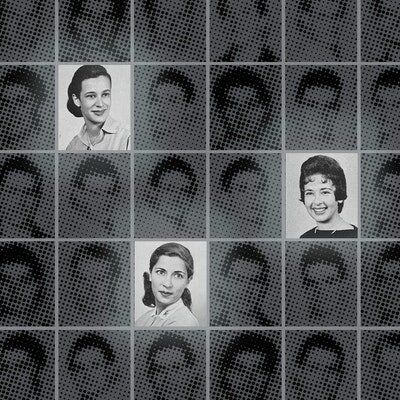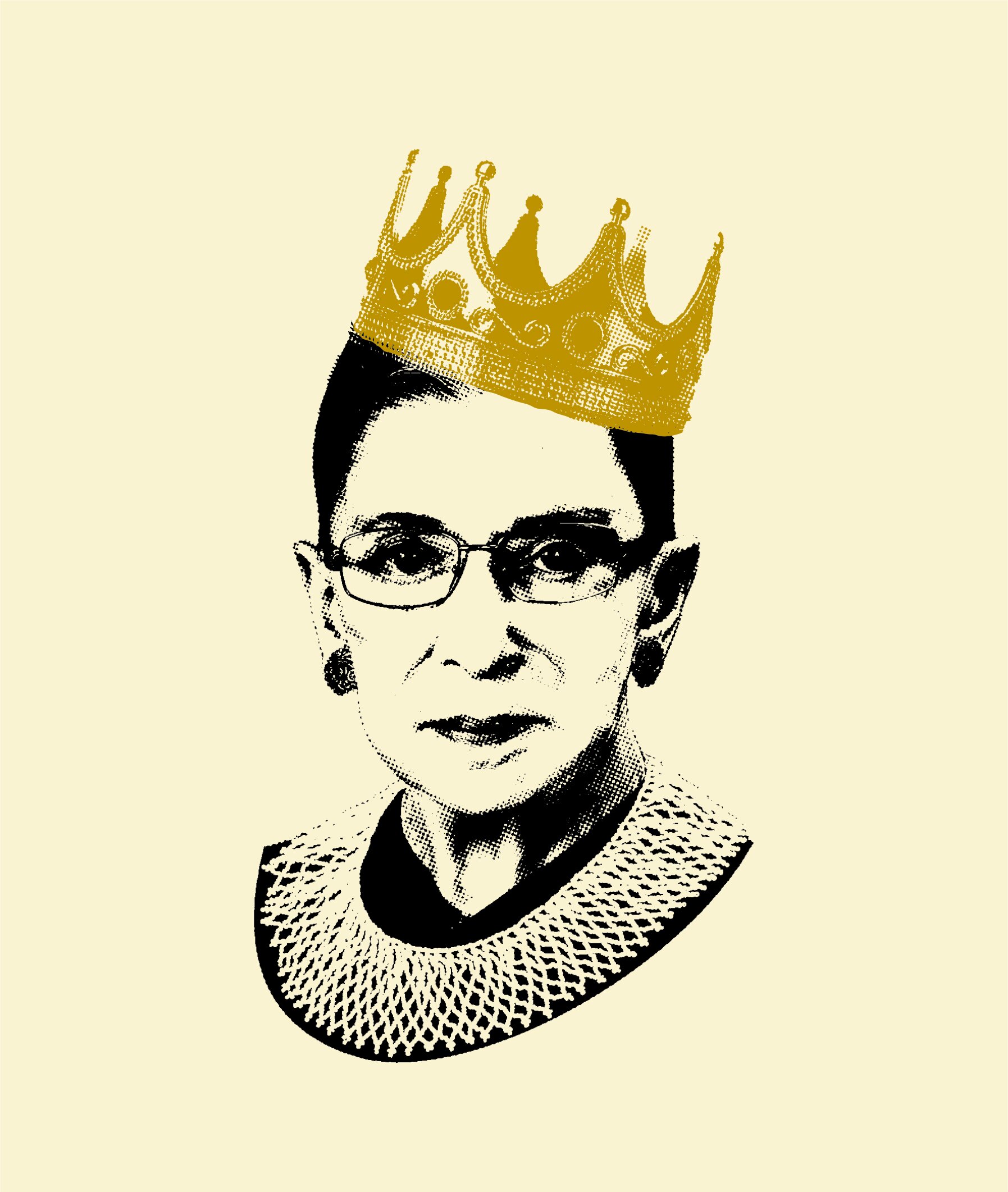Remembering R.B.G.
This week, America lost another icon. Supreme Court Justice Ruth Bader Ginsburg, affectionately known as “R.B.G.,” died on Friday from metastatic pancreatic cancer.
Man 2020. The hits just keep coming, don’t they?
Like many young female lawyers, R.B.G. has been my inspiration from the beginning. She is the epitome of a strong, independent woman and spent her legal career fighting for gender equality and LGBTQ+ rights. But her influence isn’t confined to the legal realm; her famous dissent collar and refusal to quietly accept ‘unjust’ SCOTUS opinions made her a pop culture icon for many Americans.
So, without further ado - here’s to remembering Ruth Bader Ginsburg ❤️
THE BEGINNING
SHE WAS BORN JOAN RUTH BADER on March 15, 1933 in Brooklyn, New York. Her father Nathan was a Jewish emigrant from the Ukraine (then the Russian empire) and mother Celia was Austrian Jewish. Ruth began using her middle name when she started school; there were a few “Joans” in her class, so Celia asked her teachers to call her Ruth. And Ruth she became!
The “Ginsburg” part was added upon Ruth’s marriage to Martin Ginsburg in July 1954, just a month after she graduated from Cornell University. Like a boss, too - R.B.G. was the highest ranking woman in her graduating class. Somewhere, somehow, Andy Bernard is bursting with pride…
R.B.G. BEGAN AT HARVARD LAW in 1956; she had a newborn daughter, and Marty was a class ahead of her. She was also one of just NINE women among 500 men. One time, the law school Dean famously asked them:
“Why are you at Harvard, taking the place of a man?”
Different times. For more on that story and the other eight women, check out this article: https://slate.com/news-and-politics/2020/07/ruth-bader-ginsburg-interview-transcript.html?fbclid=IwAR2jaOgMFcMc86Ot6td9a0O7XDQjKlBBDvO9wGyonOAqmvi7pINpxSwX3zg.
Well, R.B.G. didn’t “take the place of a man” to mess around. As a 1L, her husband Marty was diagnosed with cancer and had to miss many classes for treatment. Rather than taking a leave of absence, Ruth went to his classes and took notes for him…while attending her own courses, taking care of a sick husband, and watching their one-year-old daughter.
And she STILL made the Harvard Law Review. As someone who struggled to just keep my head above water during Harvard 1L, I cannot express how much determination/dedication/sheer brilliance this feat took.
BEFORE RUTH’s 3L YEAR, Marty got a great job in New York City. They didn’t want to be separated, so Ruth asked Harvard if she could finish her HLS degree via classes at Columbia…and they said no.
So R.B.G. casually transferred to Columbia Law School for her final year, made it onto THEIR law review, and tied for first in her class at graduation.
Badass.
WORK BEFORE THE SUPREME COURT
DESPITE HER INCREDIBLE GRADES and recommendations from Columbia professors, R.B.G. was refused a clerkship with Supreme Court Justice Felix Frankfurter because she was a woman. She was instead hired by Judge Edmund Palmieri of the U.S. District Court of the Southern District of New York, and clerked there for two years.
R.B.G. engaged in academic work for a few years before becoming a civil procedure professor (i.e., the rules for how courts work) at Rutgers Law School from 1963 to 1972. In that position, Ruth was one of just 20 female American law professors - and was paid less than her male colleagues because Marty had a high-salary job.
SHE TAUGHT AT COLUMBIA LAW SCHOOL from 1972 to 1980, during which time she also co-founded the Women’s Rights Project for the ACLU. Between 1973 and 1976, Ruth was thrust into the spotlight for arguing SIX gender discrimination cases before the Supreme Court - and winning five.
FIVE. She had an 83% success rate, while arguing about women’s rights, in front an all-male Court. Amazing.
HER FIRST CASE before the Supreme Court involved a female Air Force lieutenant, Sharron Frontiero, and her civilian husband Joseph. Sharron tried to claim Joseph as her “dependent,” but an Air Force statute stated that only women could be treated as dependents unconditionally; for a woman to claim her male spouse as a dependent, she had to prove her husband depended on her for more than half of his support. This wasn’t the case for the Frontieros, and her dependent benefits were denied. On behalf of the ACLU, R.B.G. argued that the statute violated the Equal Protection Clause by branding women as inferior to men - and the justices agreed. In an 8-1 ruling, the justices voted to strike down the statute.
R.B.G. is the reason that I, and so many other military women, do not receive less benefits than our male counterparts.
R.B.G. adopted a brilliant strategy while arguing these gender discrimination cases. She often used men as her plaintiffs, showing that discrimination between men and women (even via laws that were meant to help women) was unconstitutionally based on unfair and harmful stereotypes, and actually hurt both groups. It was exceedingly successful, and her slow march towards equality ensured that such changes could not be easily overturned.
SCOTUS
RUTH WAS APPOINTED to the U.S. Court of Appeals for the D.C. circuit by President Carter in 1980, and then nominated to the Supreme Court by President Clinton in 1993. The Senate confirmed her by a 96-3 vote, and R.B.G. became the second female and the first Jewish woman on the Supreme Court.
In her 27 years on the bench, R.B.G. took a cautious (if lively) approach to adjudication. In her own words,
“Measured motions seem to me right, in the main, for constitutional as well as common law adjudication. Doctrinal limbs too swiftly shaped, experienced teaches, may prove unstable.”
Just as she had in her time as a litigator, R.B.G. continued to build cautiously on Supreme Court precedent rather than pushing for quick change, and constitutional interpretations consistent with her own vision.
Despite beginning her tenure as a “moderate” justice, Ruth evolved into a liberal member of the bench. When the Court split 5 to 4 along ideological lines and the liberals were in the minority, Ginsburg often wrote or assigned the dissenting opinion, and urged her fellow justices to issue a unified statement. Her dissents are famous, as are her dissent collars (see below). When the Court appeared to announce decisions, and R.B.G. wore one of these, you KNEW she had something to say.
My favorite R.B.G. opinion? United States v. Virginia, 1996 - a case asking if the Virginia Military Institute’s male-only admissions policy violated the equal protection clause of the 14th Amendment. In an 8-1 decision, R.B.G. wrote that it did. VMI failed to provide an “exceedingly persuasive justification” for excluding women, and the creation of a separate, “women’s” VMI would be “substandard” to VMI in many ways. Therefore, VMI’s policy excluding women was unconstitutional and must be struck down.
R.B.G. in her final official SCOTUS photo
R.B.G. WAS DIAGNOSED WITH COLON CANCER in 1999 and pancreatic cancer in 2009. Both times, she didn’t miss a day on the bench - even though the pancreatic cancer surgery occurred just 10 days before the Court went back into session. In November 2018, R.B.G. fell in her office and fractured three ribs, and her doctors found cancer nodules in her lungs. Following another surgery, she missed oral argument on January 7 - the first time since joining the court 25 years earlier.
Last summer, 2019, R.B.G. was again treated for a tumor in her pancreas. She was deemed cancer-free in January 2020, but began chemotherapy treatment once more in May. This final bout of cancer, her fourth, caused her death on September 18, at the age of 87.
LEGACY
APART FROM HER COLLAR and famously sharp dissents, R.B.G. advocated the use of foreign law and international norms in shaping SCOTUS decisions and U.S. precedent. She also administered the Oath of Office to V.P. Al Gore during his second term, becoming just the third woman to administer the oath. Finally, Ruth became the first Justice to officiate a same-sex marriage in 2013, shortly after same-sex marriage rights were bolstered in two separate SCOTUS opinions.
Her closest friend on the Court was Justice Antonin Scalia, her complete OPPOSITE on the ideological spectrum. Ruth and Antonin rarely agreed on contentious cases, but often went to dinner and saw the opera together. They even appeared in a few!
Finally, R.B.G. might be the only pop culture icon to ever sit on the Supreme Court (unless Kim K makes her way up the ranks…we’ll see). She received a lot of attention for her fiery dissents and refusal to be quiet when she disagreed with the Court; therefore, the public labeled her “The Notorious R.B.G.” as a play on the rapper, “Notorious B.I.G.” She was even portrayed recently by Kate McKinnon on SNL - you can watch the clip here: https://www.youtube.com/watch?v=99MI90bKWtE.
In short, my short description doesn’t begin to cover Ruth Bader Ginsburg’s legacy. As her friend and fellow justice Antonin Scalia famously acknowledged,
“She is the Thurgood Marshall of gender equality law.“
Books have been written, documentaries made, and movies shot to discuss R.B.G.’s incredible life. Her opinions are heavily cited and powerful words often quoted; her jurisprudence is revered, and her spirit is much admired. As a law student, seeing “Justice Ginsburg, dissenting” always makes me perk up - because I know she has something to say.
SHE WILL GO DOWN IN HISTORY as one our most influential and respected Supreme Court justices, even by those who disagree with her legal and ideological views. Ruth Bader Ginsburg has been an inspiration for several generations of lawyers, and I’m thankful to have witnessed her tenure on the Court firsthand.








